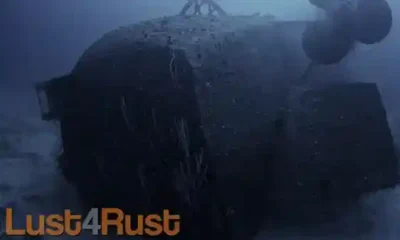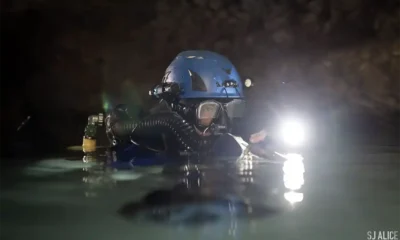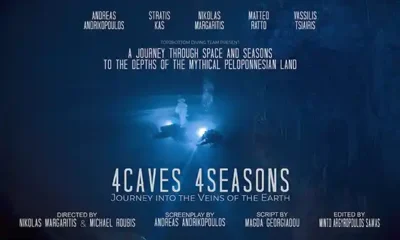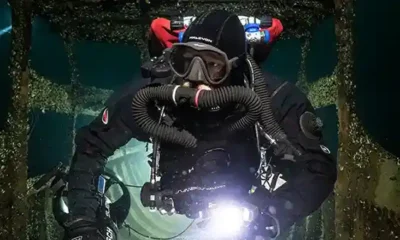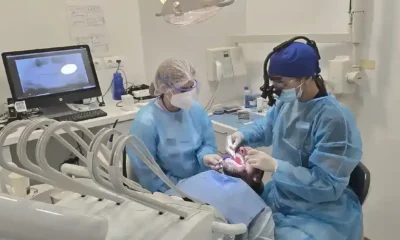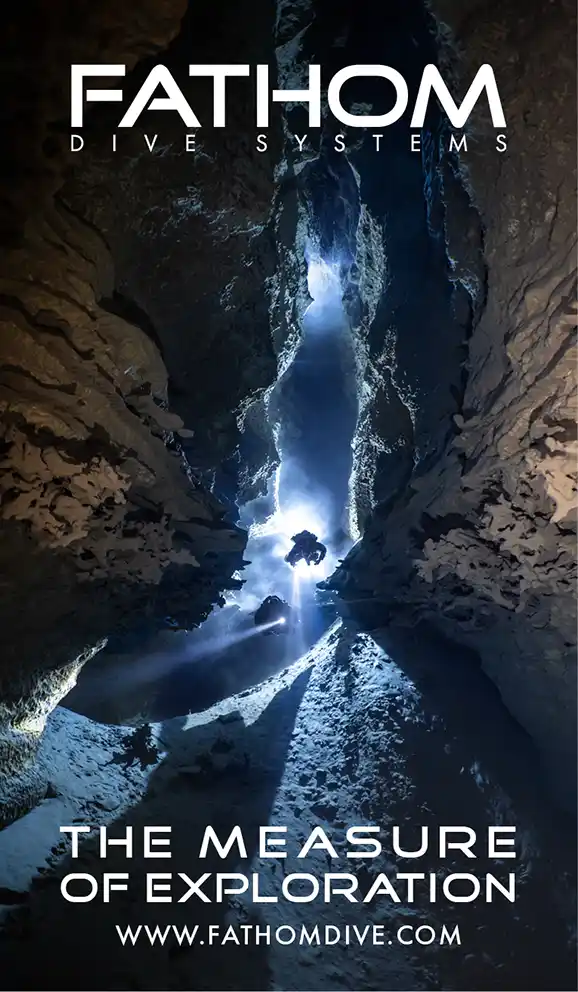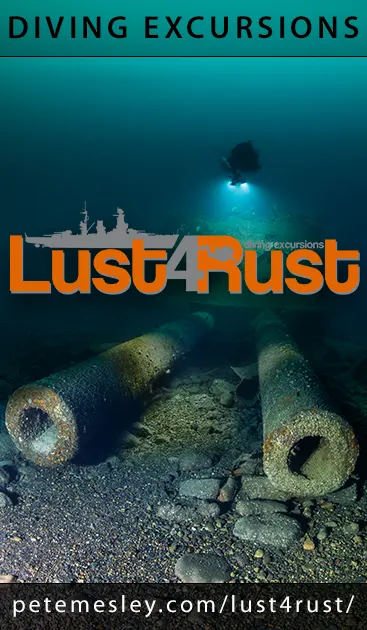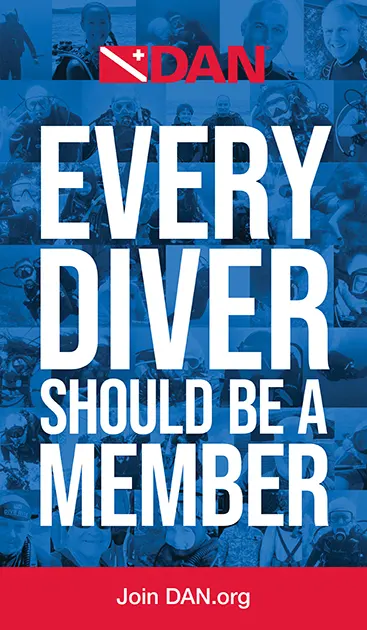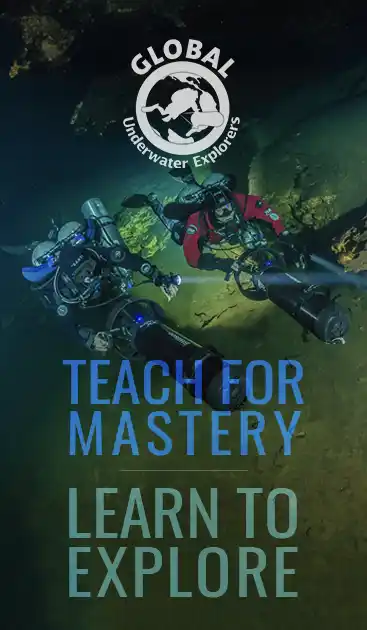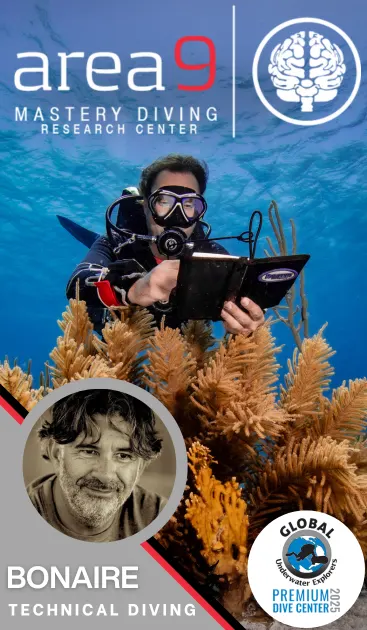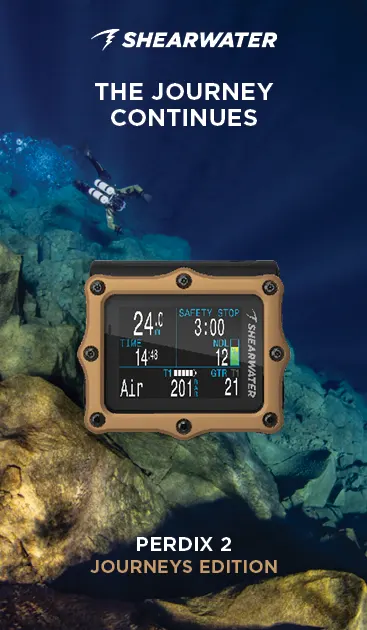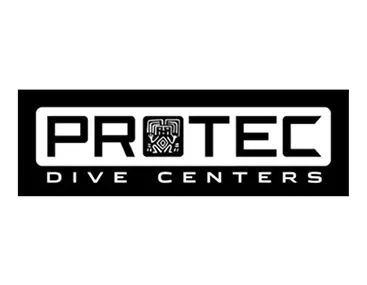Equipment
KEEP IT SIMPLE: Musings About the SF2
Scuba Force founder and president Horst Dederichs explains his motivation and approach in designing the SF2 rebreather, and highlights the rebreather’s key features.
By Horst Dederichs

In the early 2000s, technical rebreather diving was still in its infancy in Europe. The number of commercially available rebreathers was limited, and most devices were suitable only for recreational depths. Electronically-controlled circulatory systems were frowned upon, at least among DIR-oriented divers.
Passive semiclosed rebreathers (PSCR) systems have now been successfully used in cave systems in the USA and much of Europe but were mostly unavailable in Germany then. Consequently, various companies (including SCUBAFORCE) began building their own PSCR devices. In fact, they created the SF1, the passive predecessor of the SF2, which was already using some of the special features of that device, in particular the carbon tubes, an outstanding further development.
It soon became clear that technical wreck diving, especially in the Atlantic Ocean, required completely different equipment than cave diving in Florida.
There are many high barriers to entry when it comes to Atlantic technical wreck diving. The tidal window determines the start of the dive. The exit point is not the same as the entry point. Divers must carry all gas supplies throughout the dive. Heavy PSCR devices with 12 or even 20-liter steel cylinders and inefficient gas consumption were suboptimal for this purpose. Nevertheless, clean construction, an internal counterlung, and streamlined design were all points that had to be preserved.
Thus, the basic idea of SF2 was born: integrate an electronic control into a PSCR system. What sounded so simple brainstorming at the table resulted in thousands of hours of work and countless test dives.

THE BEGINNING
Skeptics in the diving community doubted that a small company would be able to successfully bring a device as complex as a rebreather onto the commercial market—especially in Europe where no device can be sold without the appropriate certifications.
So, how to do it? With passion, enthusiasm, and a good team.
Needless to say, there were setbacks in the first few years. If the aim is consistent quality with lots of turned and machined parts, recirculating devices require industrial production on modern computer numerical control (CNC) machines. However, industrial production requires industrial quantities—numbers that are almost never achieved in diving and certainly not with a niche product such as a rebreather. Despite rejections and frequent returns to square one, persistence led to success and a large CNC company was ready to produce the parts.
However, that didn’t solve all of SCUBAFORCE’s problems. Based on recommendations, we built the first prototypes using control electronics from California. Unfortunately, what was technically an ultra-modern concept at the time was immature in practice and production. The project almost failed when a large delivery of components arrived with faulty electronics. The resulting electronic failures, and leaks in the housing caused severe financial setbacks. But in every team there is someone who stays calm even in crises and can lift up colleagues. In our case, that person was the now retired Tom Jaspers. Tom is one of the best technical divers in Europe, and an enthusiastic and experienced rebreather diver and instructor, without whom the SF2 project might have failed.
The solution to the electronics problem was found in Canada. Shearwater had long since established itself as a leading manufacturer of electronics for rebreathers, and the Canadians were willing to make their electronics available for the SF2. To this day, there is an intensive collaboration between Shearwater and SCUBAFORCE that goes far beyond rebreathers.
It cost nerves and brought gray hair but, after many difficulties, the result was finally presentable: The SF2 ECCR.

THE PHILOSOPHY
High waves, violent entry, strong current, salty moisture: Wreck diving in the Atlantic places the highest demands on divers and equipment. Delicate technical gadgets have no place here. Expedition equipment built for this environment must be simple and reliable in every respect. KEEP IT SIMPLE means nothing is installed that is not absolutely necessary, but the components that are installed must meet the highest quality requirements.
Another important point: The diver must control the device—not the other way around. Technology must be redundant, a truism in technical diving, but the diver must also be able to master it. Twenty different emergency procedures can lead to excessive demands in stressful situations. An efficient, easy-to-teach, and accessible procedure is almost always the better way.
Education and training are particularly important in this concept.



THE SF2 ECCR – FROM BOTTOM TO TOP: THE LOWER SECTION
COUNTERLUNG, OVERPRESSURE VALVE, AND AUTOMATIC BYPASS.
The counterlung is a classic bellows system which is used in a similar form in PSCR devices. However, as an electronically controlled system, the SF2 requires only one counterlung. To save weight, the overpressure valve is inserted directly into the lower disk of the counterlung. One of the big advantages of the SF2: The fold-shaped counterlung is not only a huge water trap, but water that has penetrated can also be easily evacuated because the overpressure valve is at the lowest point.
The counterlung is attached to the middle section. This is where the automatic bypass valve is located; this positioning allows diluent gas to flow in via a trigger system if the volume is exhausted.
The connection for the manual gas feed for diluent and oxygen is also located in the middle section. More on this in the description of the manual add gas kit and off board gas feed.

THE SCRUBBER
The scrubber sits on the middle section. The scrubber is made from a single piece of material, requires minimal O-rings, and holds approximately 2.2 kg. Due to its design, warm exhaled air flows continuously around the scrubber, which significantly increases the efficiency of CO2 binding. The sieve discs are made of high-quality stainless steel, which offer enormous stability. The scrubber can be filled with different amounts thanks to a continuous 8 mm threaded rod: A full lime container is a good lime container.
The connection flange is made of anodized aluminum and is now sealed with two O-rings in the head.

THE HEAD
The solenoid, oxygen sensors, electronics are all contained in a very small space. This compactness minimizes gas volume and the associated moist air in the head. But this is not the only protection mechanism for the oxygen sensors. Positioned in a separate chamber that is not permanently exposed to the main gas stream, the sensors (manufactured by Analytical) provide consistently reliable data. The SF2’s electronics are manufactured by Shearwater. The board is completely encased and sits below the 9V battery compartment. High-quality coaxial cables and a Jaksa solenoid valve ensure absolute reliability.
Note: oxygen is fed into the exhalation side of the SF2.
MANUAL ADD AND OFF BOARD GAS KIT
The Manual Adds and Off Board Gas Kits are the most important redundancy component in the SF2. Not only can external gas be applied here, but the rebreather can also be easily controlled manually. The Manual Adds were deliberately separated into the oxygen and diluent areas. The SF2 offers a very clear right-left logic. The diver’s right hand always controls the oxygen, the left the diluent.
This leads to simple courses of action, which help to prevent serious errors, especially in stressful situations. The Manual Adds are small, compact, made of stainless steel, and easy to use with one hand. The flow hole on the oxygen side is deliberately small which prevents unintentional overfilling with oxygen—external gas is applied separately and, even with the inboard bottles closed, all peripherals connected to the first stages (like the inflator) work.
The Manual Add Kits are so redundant against themselves that oxygen and diluent can be supplied via a Manual Add: a procedure that requires experience and training but keeps the diver in the loop even when multiple problems occur.

ACCESSORIES AND OTHER COMPONENTS
The SF2’s wing, first stages, backplate, and harness all come from the SCUBAFORCE Black Devil series. The Pro stages were developed specifically for the SF2 and offer the best configuration with sufficient connection options. Wing, harness, and backplate can be adjusted to individual needs.
All hoses are equipped with lockable quick-release fasteners which not only increase convenience during assembly and disassembly but also keep hoses secure during the dive.
Various gas paths on the first stages and on the Manual Adds are equipped with shut offs.
This means the diver can consciously and easily close individual gas paths if necessary.

BREATHING COMFORT AND CERTIFICATIONS
Having been on the market for over ten years now, well over a thousand SF2s have been sold. The chamber tests at DEKRA (as part of the CE test) have shown the SF2’s excellent WOB. Users appreciate the simplicity and reliability of the device, and not just on wreck and cave dives.
A lot has changed since the early days. We have long since moved into our new company building and integrated production in-house. The SF2 is still manufactured in Germany, where most of the parts (apart from the electronics) originate. SCUBAFORCE has become a globally established manufacturer of technical diving equipment, with the SF2 still playing a central role. The team has grown and changed. However, the passion remains.

Horst Dederichs is the owner of SCUBAFORCE and has been a diving industry professional since 1992. He is a TDI instructor trainer for OC and CC. He primarily dives wrecks around Europe in both the Atlantic Ocean and the Mediterranean Sea.
Dederichs has dived the Lusitania off the Irish Coast, and he led several expeditions that were documented on German television, including Reichenfels and HMS Hampshire.
Dederichs is also the author of several books in German: Technisches Tauchen; i; Tauchausrüstung: Kauf – Funktion Pflege.


